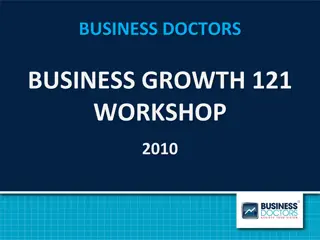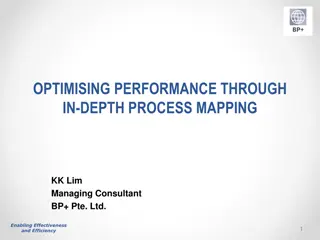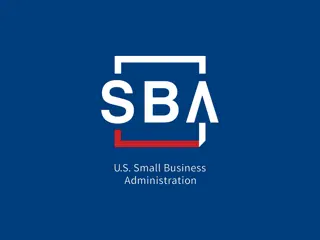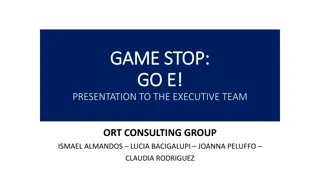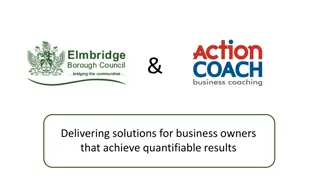Strategies and Essentials for Successful Business Turnaround
Outlined are Michael Porter's Generic Strategies, focusing on cost leadership, differentiation, and focus leadership, along with key factors like leadership abilities and team dynamics. The successful turnaround strategy involves crisis stabilization, new leadership, stakeholder management, strategic focus, process improvement, organizational change, and financial restructuring.
Download Presentation

Please find below an Image/Link to download the presentation.
The content on the website is provided AS IS for your information and personal use only. It may not be sold, licensed, or shared on other websites without obtaining consent from the author.If you encounter any issues during the download, it is possible that the publisher has removed the file from their server.
You are allowed to download the files provided on this website for personal or commercial use, subject to the condition that they are used lawfully. All files are the property of their respective owners.
The content on the website is provided AS IS for your information and personal use only. It may not be sold, licensed, or shared on other websites without obtaining consent from the author.
E N D
Presentation Transcript
Michael Porter in the year 1985 outlined a set of GENERIC STRATEGIES also known as Porter s Generic Strategies. It describes how a company undertakes competitive advantages in various market Similar to Porter s Generic Strategies a successful turnaround strategy would need the management team to focus on the following three important factor: 1. Low cost operator strategy (Cost Leadership) 2. Differentiated products (Differentiation) 3. Leadership (Focus)
Leadership is the ability of a manager to induce subordinate to work with confidence and zeal. by- Koontz and O Dennell Leadership is the exercise of authority and making of decisions by-Dubin, R Leadership is the activity of influencing people to strive willingly for group objectives. by- George R. Terry
CEO HR Team Other s Mana geme nt Team Produ ct Team SCM Team Finan ce Team Sales Team
People Skills Creativity Focus Decisiveness Resilience Perseverance Honest and transparent Collaboration/Teamwork
Improvising the product. Bringing in new features. Reducing cost of production. Improvising the quality. Improvising the packaging. Increasing the customer services. Reducing operating cost. Reducing the lead-times. Holding lesser stock. Reducing transportation times.
1. Analysis of present situations. 2. Stabilizing of situations of crisis. 3. Redefining of the strategy to suit present environment. 4. Financial restructuring. 5. Strategy implementation. 6. Change management. 7. Getting back to normal position.
DIRECTIVE STYLE ANALYTICAL STYLE CONCEPTUAL STYLE BEHAVIOURAL STYLE
As per Slatter, Lovett, and Barlow(2006),model for attaining successful business turaround includes following essentials elements: 1. Crisis stabilisation. 2. New leadership. 3. Stakeholder management. 4. Strategic focus. 5. Critical process improvement. 6. Organisational change. 7. Financial restructuring.
Organization Change and Subsystem Change Organization Change and Subsystem Change Planned v/s Unplanned Change Transformational v/s Incremental Change Remedial v/s Developmental Change
There have been various instances where the turnaround strategies prove to be a success story. Some of the examples of sucessful turnaround implementation are: 1. Apple Company. 2. Marvel group. 3. Dell Computers.
In order to ensure quality in the management process, following eight quality management principles needs to be taken into consideratiom: Customer focous. Leadership. Involvement of people. Process approach. System approach to manahement. Factual approach to decision making. Mutually beneficial supplier relationships.
O Organizational skills Time management Technical skills Technical knowledge Quality management Risk management Technical skills Human/People skills Leadership Human/People skills rganizational skills Planning Communication Scheduling Motivation Budgeting Resource allocation Supervision Cost management Organizing Conflict management Negotiation Project management Use of IT Staffing Administrative Team-building










